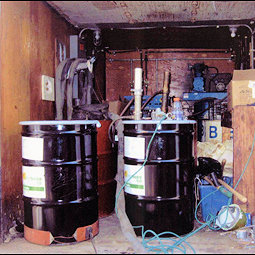Chemical Hazards
Introduction
Harmful chemical compounds in the form of solids, liquids, gases, mists, dusts, fumes, and vapors exert toxic effects by inhalation (breathing), absorption (through direct contact with the skin), or ingestion (eating or drinking).

Airborne chemical hazards exist as concentrations of mists, vapors, gases, fumes, or solids. Some are toxic through inhalation and some of them irritate the skin on contact. Others may be toxic by absorption through the skin or through ingestion, and some are corrosive to living tissue.
Degree of Risk
The degree of worker risk from exposure to a hazardous substance depends on four main factors: toxicity, dose, frequency, and duration.
- Toxicity – How harmful the substance is by nature. For example, asbestos is more toxic than dust from common soil.
- Dose – The amount of the substance a worker takes in during exposure. A higher dose usually means a greater risk.
- Frequency – How often the worker is exposed. Repeated exposure can be more harmful, even at lower doses.
- Duration – How how long the worker is exposed. Long-term exposure can be more harmful, even at lower doses.
Knowledge Check Choose the best answer for the question.
3-1. What factors determine the risk of exposure to hazardous chemicals?
You forgot to answer the question!
